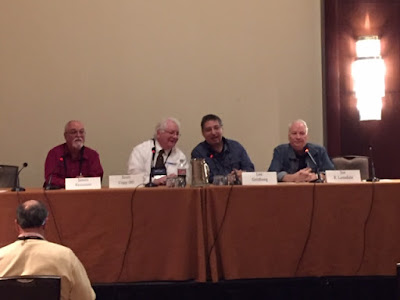 |
| My copy, complete with price sticker from the Used Book Warehouse in Rockport, Texas. |
LASSITER by “Jack Slade” is the first true Adult Western
series in the sense that we use the term now, meaning a Western with sex scenes
in it. HIGH LONESOME is an early entry in that series, the sixth, and is also
the first to be written by the man who was also editing it, Peter McCurtin.
McCurtin is one of those writers whose prose is almost unmistakable. He has a
distinctive style that is crude, profane, and violent, but it’s also very
effective in moving the story along. There are few, if any, wasted words in a
Peter McCurtin novel.
Lassiter (we’re never told his first name, as I recall) is very much an
anti-hero, sometimes a bank or train robber, sometimes a hired killer, but a
man who does operate according to his own standards and code. In HIGH LONESOME,
he’s hired to kill a man. Simple enough, but by the time Lassiter tracks his
quarry to the town of Socorro, New Mexico Territory, the gent is already dead.
Since he can’t complete that job, Lassiter looks around for another way to make
some money. He doesn’t have to look far. There’s a war going on around Socorro
between a greedy rancher who wants to own everything in sight and a crooked
businessman in town who has the same goal. Both sides are hiring gunmen. It
seems simple enough for Lassiter to play them against each other and clean up .
. .
As usual in these books, not everything goes according to Lassiter’s plan. He
gets double-crossed more than once, and most of the book is a long, bloody
series of shootouts, bushwhackings, and betrayals. The plot isn’t complex, but
McCurtin isn’t trying to make the reader think. He’s more interested in
achieving a visceral reaction, and he succeeds admirably in that. Lassiter is
almost a force of nature, and in the midst of all the carnage, you can’t help
but root for him, even though he’s not exactly likable.
As I mentioned above, HIGH LONESOME is McCurtin’s first Lassiter novel, and I
think some of his later entries have better, more fully developed plots. But
for hardboiled, amoral Western action, it’s hard to beat his work, and I
enjoyed this novel. For fans of grittier Westerns, it’s well worth reading.





